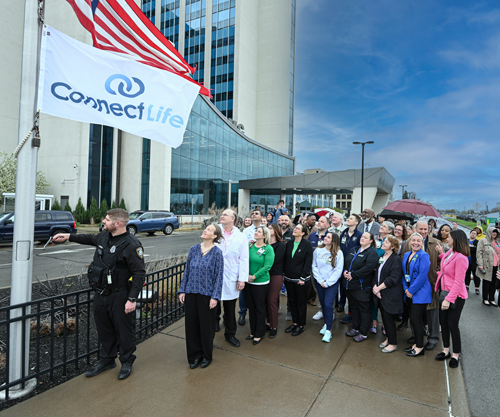Featured News - Current News - Archived News - News Categories
Journal of the American Heart Association Report
Submitted by the American Heart Association
Insomnia may be a potential risk factor for a brain bleed from a ruptured aneurysm along with more well-known risk factors of smoking and high blood pressure, according to new research published Wednesday in the Journal of the American Heart Association, an open access journal of the American Heart Association.
More than 3% of adults worldwide have unruptured blood vessel malformations in the brain called intracranial aneurysms, the majority of which will never rupture. About 2.5% of intracranial aneurysms will rupture, resulting in a subarachnoid hemorrhage (SAH), also called a brain bleed. SAH is a type of stroke that occurs when a blood vessel on the surface of the brain ruptures and bleeds into the space between the brain and the skull.
“Ruptured aneurysms are highly fatal. It is, therefore, extremely important to identify modifiable risk factors that can help prevent aneurysms from rupturing,” said study author Susanna C. Larsson, Ph.D., associate professor in the unit of cardiovascular and nutritional epidemiology at the Karolinska Institutet in Stockholm, Sweden, and the unit of medical epidemiology at Uppsala University in Uppsala, Sweden.
The researchers sought to determine whether various factors were associated with intracranial aneurysm and/or the aneurysm rupturing. They studied established risk factors such as smoking and high blood pressure and also assessed the link between aneurysms and coffee consumption, sleep, physical activity, body mass index (BMI), blood glucose levels, type 2 diabetes, blood pressure, cholesterol, chronic inflammation and kidney function.
Data from several genome-wide association studies were used to gauge genetic associations to lifestyle and cardiometabolic risk factors. Genetic information from a meta-analysis conducted by the International Stroke Genetics Consortium was used to identify nearly 6,300 cases of intracranial aneurysm and nearly 4,200 cases of aneurysmal subarachnoid hemorrhage. Cases of intracranial aneurysm and subarachnoid hemorrhage were compared to over 59,500 controls to determine genetic predisposition for aneurysms.
According to the analysis:
√ A genetic predisposition for insomnia was associated with a 24% increased risk for intracranial aneurysm and aneurysmal subarachnoid hemorrhage.
√ The risk for intracranial aneurysm was about three times higher for smokers vs. non-smokers.
√ The risk for intracranial aneurysm was almost three times higher for each 10 mm Hg increase in diastolic blood pressure (the bottom number in a blood pressure reading).
√ High triglyceride levels and high BMI did not demonstrate an increased risk for intracranial aneurysm and aneurysmal subarachnoid hemorrhage.
“The association between insomnia and intracranial aneurysm has not been reported previously, and these findings warrant confirmation in future studies,” Larsson said. “Our research supports the thinking that risk factors that people can change or manage may impact brain aneurysms and hemorrhage risk. Once confirmed, future studies should examine ways to incorporate this knowledge into prevention programs and therapies.”
According to a 2016 American Heart Association scientific statement, Sleep Duration and Quality: Impact on Lifestyle Behaviors and Cardiometabolic Health, insufficient and poor-quality sleep and sleep disorders are linked to a higher risk of high blood pressure. The statement summary notes that treating people with sleep disorders may provide clinical benefits, particularly for blood pressure.
Study limitations included that there was not enough information to adequately analyze some of the risk factors. In addition, the analysis included only people of European ancestry; therefore, the findings may not be generalizable to people from diverse racial and ethnic groups.
Co-authors are Ville Karhunen, Ph.D.; Mark K. Bakker, M.Sc.; Ynte M. Ruigrok, Ph.D.; and Dipender Gill, Ph.D.
The study was funded by the Swedish Research Council for Health, Working Life and Welfare funded the study.
Additional resources:
Follow AHA/ASA news on Twitter @HeartNews
Follow news from the Journal of the American Heart Association @JAHA_AHA
Statements and conclusions of studies published in the American Heart Association’s scientific journals are solely those of the study authors and do not necessarily reflect the association’s policy or position. The association makes no representation or guarantee as to their accuracy or reliability. The association receives funding primarily from individuals; foundations and corporations (including pharmaceutical, device manufacturers and other companies) also make donations and fund specific association programs and events. The association has strict policies to prevent these relationships from influencing the science content. Revenues from pharmaceutical and biotech companies, device manufacturers and health insurance providers are available here, and the Association’s overall financial information is available here.
The American Heart Association is a relentless force for a world of longer, healthier lives. We are dedicated to ensuring equitable health in all communities. Through collaboration with numerous organizations, and powered by millions of volunteers, we fund innovative research, advocate for the public’s health and share lifesaving resources. The Dallas-based organization has been a leading source of health information for nearly a century. Connect with us on heart.org, Facebook, Twitter or by calling 1-800-AHA-USA1.





























